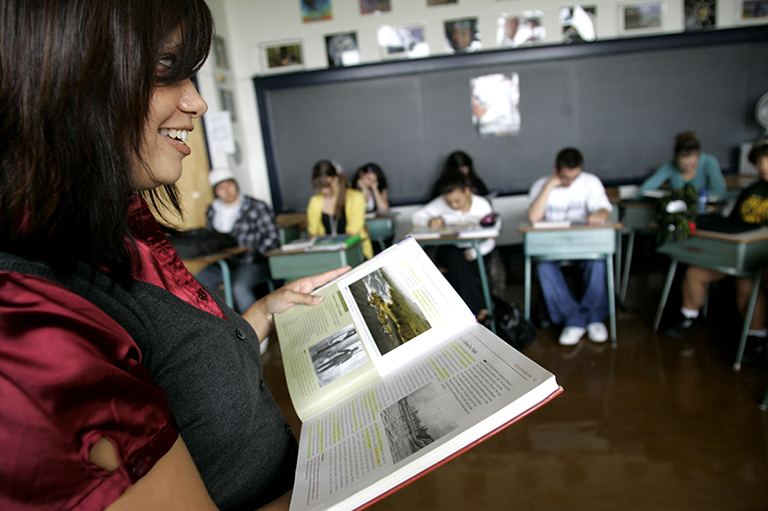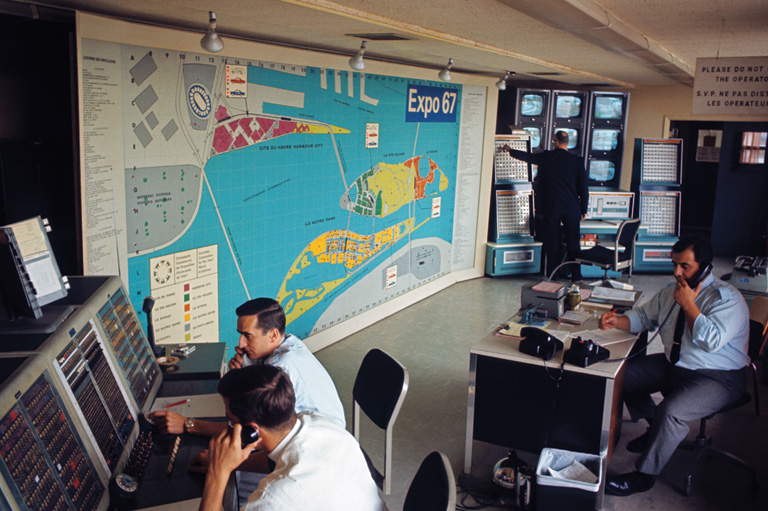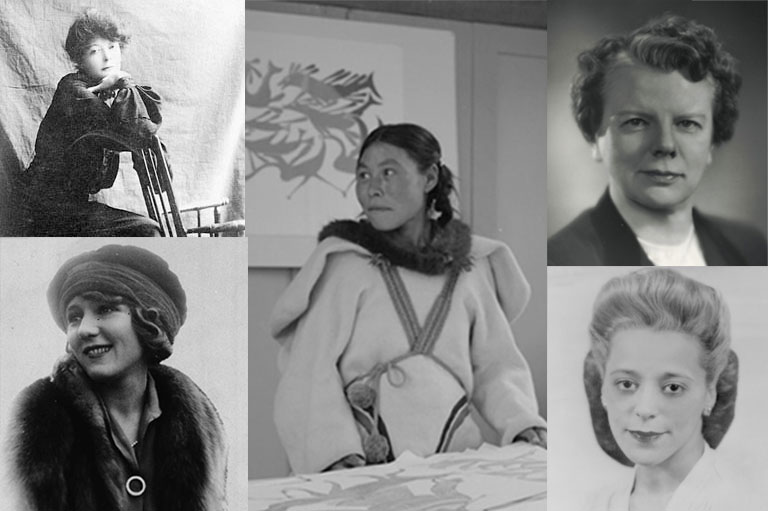Shifting Connections: Safety, Security and Sacrifice in a Changing World
Grade Levels: 8, 9/10, 11/12
Subject Area: Social Studies, History
Lesson Overview
In this digital media-rich series of individual and team-based activities, students address the concept of national security in historical and contemporary contexts. They use mobile game technology to follow the interactive story of students from Kitsilano Secondary in Vancouver in 1944, who are faced with the difficult decision of whether to enlist in the war effort. In the process, they are presented with primary source artifacts triggered through Global Positioning Systems (GPS) and Quick Response (QR) codes on their mobile devices. They also have fictitious conversations with past students, interact with a Geographical Information Systems (GIS) map, and watch present-day interviews of survivors who went to the school. The game is a means for students to better understand the difficult decisions confronting people during the war by positioning them in the historical perspective of students from their own school at that time. They create a letter defending their decision then explain, defend and reconsider their reasoning in group critique sessions.
In the final activity, students examine Bill C-51 considering their new learning and awareness to in the present, by conducting a team problem-based learning approach to the question:
“What level of commitment should Canadians be prepared to make for national security and personal safety in our rapidly changing world?”
Time Required
2-5 x 75 minute classes
Historical Thinking Concept(s)
This lesson plan uses all six historical thinking concepts. This includes: establish historical significance, use primary source evidence, identify continuity and change, analyze cause and consequence, take historical perspectives, and understand the ethical dimension of historical interpretations.
Learning Outcomes
Student will:
- identify and explain common attitudes to volunteering for service in times of war
- evaluate the rationale of classmates’ decisions on whether to go to war
- assess the similarities and differences of past threats to national security to the present
- create new strategies and perspectives to address issues of public safety and national security in the future
Background Information
This series of learning activities are designed to support unit studies and develop critical thinking skills relating to:
- Canada and the Second World War (emphasis: contribution, war at home, D-Day)
- Post-war diplomacy, international policy, foreign and domestic threats
- National identity, civil liberties, social justice
The Lesson Activity
Activating:
Student interest is initiated in the first activity in two ways:
- Taking a survey that assesses their attitudes to volunteering for service during the Second World War, and opinions of who should serve in current conflicts
- Focusing on a number discussion questions, such as:
- Do all citizens share a common responsibility for national security?
- What commitments should Canadians make to ensure collective safety?
- Are the sacrifices by Canadian Forces in the past relevant in today’s changing world?
Acquiring:
Student learning is facilitated for individuals through a combination of:
- personal research
- critical analysis
- multiple opportunities for personal reflection
- multimodal consideration of content (videos, digital map, images)
Student learning is facilitated for groups through a combination of:
- in-class discussion
- online discussions forums
- critical analysis and assessment of letters to loved one’s activity
- team inquiry using collaborative digital tools
Applying:
Students will demonstrate their understanding through:
- creating a letter to a loved one as a piece of historical fiction informed by primary sources
- documenting evidence of their individual and group research to their collaborative digital tools
- building a digital online artifact to present their team inquiry projects, such as a(n):
- ARIS situated documentary episode
- press conference Youtube or Vimeo video
- website
Materials/Resources
Pre-Assessment Survey: Volunteering for War
Videos:
Dilemma 1944 Situated Documentary
Description: Overview Video
Connaught Park Cadet Parade: Kitsilano High School
Canadian Army Newsreel: Reinforcements Arrive
Canadian Army Newsreel: Conscription for Overseas Service
Websites:
Shifting Commitments: Safety, Security and Sacrifice in a Changing World
Rex Murphy: Terror Legislation
Online Sources:
The Globe and Mail: Privacy, security and terrorism: Everything you need to know about Bill C-51
CBC News: New anti-terrorism bill could put the chill on free speech
CBC News: Stephen Harper makes his case clear for new powers to combat terror
National Defence and the Canadian Armed Forces: Past Operations
Lesson Requirements:
Mobile phones or tablets (students without devices can share with others) Computer and data projector for face-to-face classes
ARIS App (free from the Apple App Store)
References
Barrett, T., & Moore, S. (2011). New approaches to problem-based learning: Revitalising your practice in higher education. New York: Routledge.
Bill C 51. (n.d.). Retrieved April 7, 2015, from bill-c-51.html
Canadian Army Newsreel - Conscription For Overseas Service. (n.d.). Retrieved April 7, 2015.
Canadian Army Newsreel - Reinforcements Arrive. (n.d.). Retrieved April 7, 2015.
Learning Resources Unit @ BCIT (2003). Contructivist e-learning methodologies: A Module development guide. Pan-Canadian Health Informatics Collaboratory.
Matthews, M. R. (2002). Constructivism and science education: A further appraisal. Journal of Science Education and Technology, 11(2), 121-134. doi:10.1023/A:1014661312550
Military Recruiting. (n.d.). Retrieved April 7, 2015.
Özdemir, G. & Clark, D. B. (2007). An overview of conceptual change theories. Eurasia Journal of Mathematics, Science & Technology Education, 3(4), 351-361.
Posner, G. J., Strike, K. A., Hewson, P. W., & Gertzog, W. A. (1982). Accommodation of a scientific conception: Toward a theory of conceptual change. Science education, 66(2), 211-227.
Powers, L. (2015, January 30). New anti-terror bill could put chill on freedom of speech. Retrieved April 1, 2015.
Privacy, security and terrorism: Everything you need to know about Bill C-51. (n.d.). Retrieved April 1, 2015.
Rex Murphy: Terror Legislation - The National - CBC Player. (2014, October 20). Retrieved April 1, 2015.
Sunal, D. W. (2007). The learning cycle: a comparison of models of strategies for conceptual reconstruction: a review of the literature. Retrieved August, 21, 2007.
White, R. & Gunstone, R.F. (1992). Probing Understanding. London: The Falmer Press, chapter 2 & 3.
Uden, L., & Beaumont, C. (2006). Technology and problem-based learning. Hershey, PA: Information Science Pub.
Themes associated with this article
Advertisement




